Evaluating the Impacts of Fertilization and Rainfall on Multi-Form Phosphorus Losses from Agricultural Fields: A Case Study on the North China Plain
Abstract
:1. Introduction
2. Materials and Methods
2.1. Study Area
2.2. Orthogonal Experimental Design
2.3. Sample Collection and Analysis
2.4. Data Statistics
3. Results
3.1. Runoff Characteristics at Varying Rainfall Intensities
3.2. Phosphorus Loss Dynamics through Different Pathways
3.2.1. Surface Runoff Phosphorus Loss
3.2.2. Interflow Phosphorus Loss
3.3. Effects of Environmental Factors on Phosphorus Losses
3.3.1. Correlating Environmental Factors with Phosphorus Loss
3.3.2. Regression Analysis of Phosphorus Loss and Environmental Factors
3.4. Impact of Optimized Fertilization on Pak Choi Growth
4. Discussion
4.1. Role of Optimized Fertilization in Phosphorus Loss Reduction
4.2. Mechanisms of Phosphorus Loss with Rainfall Intensity
4.3. Uncertainties and Aspects for Improvement
5. Conclusions
Author Contributions
Funding
Data Availability Statement
Acknowledgments
Conflicts of Interest
References
- Wang, J.; Chen, J.; Jin, Z.; Guo, J.; Yang, H.; Zeng, Y.; Liu, Y. Simultaneous removal of phosphate and ammonium nitrogen from agricultural runoff by amending soil in lakeside zone of Karst area, Southern China. Agric. Ecosyst. Environ. 2020, 289, 106745. [Google Scholar] [CrossRef]
- Lassaletta, L.; Billen, G.; Grizzetti, B.; Anglade, J.; Garnier, J. 50 year trends in nitrogen use efficiency of world cropping systems: The relationship between yield and nitrogen input to cropland. Environ. Res. Lett. 2014, 9, 105011. [Google Scholar] [CrossRef]
- FAO. Inorganic Fertilizers 1990–2020; FAO STAT Analytical Brief 47; FAO: Rome, Italy, 2022. [Google Scholar]
- Bindraban, P.S.; Dimkpa, C.O.; Pandey, R. Exploring phosphorus fertilizers and fertilization strategies for improved human and environmental health. Biol. Fertil. Soils 2020, 56, 299–317. [Google Scholar] [CrossRef]
- Wang, Y.; Liang, J.; Yang, J.; Ma, X.; Li, X.; Wu, J.; Yang, G.; Ren, G.; Feng, Y. Analysis of the environmental behavior of farmers for non-point source pollution control and management: An integration of the theory of planned behavior and the protection motivation theory. J. Environ. Manag. 2019, 237, 15–23. [Google Scholar] [CrossRef] [PubMed]
- Wu, Y.; Liu, J.; Shen, R.; Fu, B. Mitigation of nonpoint source pollution in rural areas: From control to synergies of multi ecosystem services. Sci. Total Environ. 2017, 607–608, 1376–1380. [Google Scholar] [CrossRef]
- Ministry of Environmental Protection of China; National Bureau of Statistics of China; Ministry of Agriculture of China. Bulletin on the First National Census on Pollution Sources of China; Ministry of Ecology and Environment of the People’s Republic of China: Beijing, China, 2010.
- Abraham, B.; Araya, H.; Berhe, T.; Edwards, S.; Gujja, B.; Khadka, R.B.; Koma, Y.S.; Sen, D.; Sharif, A.; Styger, E.; et al. The system of crop intensification: Reports from the field on improving agricultural production, food security, and resilience to climate change for multiple crops. Agric. Food Secur. 2014, 3, 4. [Google Scholar] [CrossRef]
- National Bureau of Statistics of China. China Statistical Yearbook-2021; China Statistics Press: Beijing, China, 2021.
- FAO. World Food and Agriculture—Statistical Yearbook 2021; FAO: Rome, Italy, 2021. [Google Scholar]
- Cui, Z.; Zhang, F.; Chen, X.; Miao, Y.; Li, J.; Shi, L.; Xu, J.; Ye, Y.; Liu, C.; Yang, Z.; et al. On-farm evaluation of an in-season nitrogen management strategy based on soil Nmin test. Field Crops Res. 2008, 105, 48–55. [Google Scholar] [CrossRef]
- Qiu, L.; Zhu, J.; Pan, Y.; Wu, S.; Dang, Y.; Xu, B.; Yang, H. The positive impacts of landscape fragmentation on the diversification of agricultural production in Zhejiang Province, China. J. Cleaner Prod. 2020, 251, 119722. [Google Scholar] [CrossRef]
- Bayad, M.; Chau, H.W.; Trolove, S.; Moir, J.; Condron, L.; El Gharous, M. Surface runoff and losses of phosphorus from hydrophobic pastoral soils. Agric. Ecosyst. Environ. 2022, 324, 107690. [Google Scholar] [CrossRef]
- Sohrt, J.; Lang, F.; Weiler, M. Quantifying components of the phosphorus cycle in temperate forests. WIREs Water 2017, 4, e1243. [Google Scholar] [CrossRef]
- Lucas, E.; Kennedy, B.; Roswall, T.; Burgis, C.; Toor, G.S. Climate Change Effects on Phosphorus Loss from Agricultural Land to Water: A Review. Curr. Pollut. Rep. 2023, 9, 623–645. [Google Scholar] [CrossRef]
- Habibiandehkordi, R.; Reid, D.K.; Goel, P.K.; Biswas, A. Phosphorus loss assessment tools: A review of underlying concepts and applicability in cold climates. Environ. Sci. Pollut. Res. 2020, 27, 3794–3802. [Google Scholar] [CrossRef] [PubMed]
- Van der Bom, F.J.T.; Kopittke, P.M.; Raymond, N.S.; Sekine, R.; Lombi, E.; Mueller, C.W.; Doolette, C.L. Methods for assessing laterally-resolved distribution, speciation and bioavailability of phosphorus in soils. Rev. Environ. Sci. Biotechnol. 2022, 21, 53–74. [Google Scholar] [CrossRef]
- Walton, C.R.; Zak, D.; Audet, J.; Petersen, R.J.; Lange, J.; Oehmke, C.; Wichtmann, W.; Kreyling, J.; Grygoruk, M.; Jabłońska, E.; et al. Wetland buffer zones for nitrogen and phosphorus retention: Impacts of soil type, hydrology and vegetation. Sci. Total Environ. 2020, 727, 138709. [Google Scholar] [CrossRef]
- Serrano-Muela, M.P.; Nadal-Romero, E.; Lana-Renault, N.; González-Hidalgo, J.C.; López-Moreno, J.I.; Beguería, S.; Sanjuan, Y.; García-Ruiz, J.M. An Exceptional Rainfall Event in the Central Western Pyrenees: Spatial Patterns in Discharge and Impact. Land Degrad. Dev. 2015, 26, 249–262. [Google Scholar] [CrossRef]
- Pionke, H.B.; Gburek, W.J.; Sharpley, A.N. Critical source area controls on water quality in an agricultural watershed located in the Chesapeake Basin. Ecol. Eng. 2000, 14, 325–335. [Google Scholar] [CrossRef]
- Yu, H.; Adu-Gyamfi, J.; Oshunsanya, S.O.; Chappell, A.; Liu, W.; Zheng, Y.; Xue, T.; Heng, L. Novel sediment source fingerprinting quantifying erosion-induced total nitrogen and total phosphorus outputs from an intensive agricultural catchment, North China. Int. Soil Water Conserv. Res. 2023, 11, 494–506. [Google Scholar] [CrossRef]
- Ma, B.; Guan, R.; Liu, L.; Huang, Z.; Qi, S.; Xi, Z.; Zhao, Y.; Song, S.; Yang, H. Nitrogen Loss in Vegetable Field under the Simulated Rainfall Experiments in Hebei, China. Water 2021, 13, 552. [Google Scholar] [CrossRef]
- Zhao, Z.; Qin, W.; Bai, Z.; Ma, L. Agricultural nitrogen and phosphorus emissions to water and their mitigation options in the Haihe Basin, China. Agric. Water Manag. 2019, 212, 262–272. [Google Scholar] [CrossRef]
- Chen, Z.; Yang, L.; Jiang, Z.; Li, C.; Hu, X.; Pang, L.; Li, S.; Sun, H. Runoff-driven nitrogen and phosphorus dynamics of substrate material for rocky slope eco-engineering. Ecol. Eng. 2013, 51, 123–132. [Google Scholar] [CrossRef]
- Zeng, S.-C.; Chen, B.-G.; Jiang, C.-A.; Wu, Q.-T. Impact of fertilization on chestnut growth, N and P concentrations in runoff water on degraded slope land in South China. J. Environ. Sci. 2007, 19, 827–833. [Google Scholar] [CrossRef]
- Dhillon, J.; Torres, G.; Driver, E.; Figueiredo, B.; Raun, W.R. World Phosphorus Use Efficiency in Cereal Crops. Agron. J. 2017, 109, 1670–1677. [Google Scholar] [CrossRef]
- Bah, H.; Zhou, M.; Ren, X.; Hu, L.; Dong, Z.; Zhu, B. Effects of organic amendment applications on nitrogen and phosphorus losses from sloping cropland in the upper Yangtze River. Agric. Ecosyst. Environ. 2020, 302, 107086. [Google Scholar] [CrossRef]
- Liu, J.; Liao, W.; Zhang, Z.; Zhang, H.; WANG, X.; Meng, M. Effect of Phopshate Fertilizer and Manure on Crop Yield, Soil P Accumulation, and the Environmental Risk Assessment. Agric. Sci. China 2007, 6, 1107–1114. [Google Scholar] [CrossRef]
- Badrzadeh, N.; Samani, J.M.V.; Mazaheri, M.; Kuriqi, A. Evaluation of management practices on agricultural nonpoint source pollution discharges into the rivers under climate change effects. Sci. Total Environ. 2022, 838, 156643. [Google Scholar] [CrossRef]
- Xue, L.; Hou, P.; Zhang, Z.; Shen, M.; Liu, F.; Yang, L. Application of systematic strategy for agricultural non-point source pollution control in Yangtze River basin, China. Agric. Ecosyst. Environ. 2020, 304, 107148. [Google Scholar] [CrossRef]
- Tian, S.; Xu, Y.; Wang, Q.; Zhang, Y.; Yuan, X.; Ma, Q.; Feng, X.; Ma, H.; Liu, J.; Liu, C.; et al. The effect of optimizing chemical fertilizers consumption structure to promote environmental protection, crop yield and reduce greenhouse gases emission in China. Sci. Total Environ. 2023, 857, 159349. [Google Scholar] [CrossRef]
- Chowdhury, R.B.; Moore, G.A.; Weatherley, A.J.; Arora, M. Key sustainability challenges for the global phosphorus resource, their implications for global food security, and options for mitigation. J. Cleaner Prod. 2017, 140, 945–963. [Google Scholar] [CrossRef]
- Luo, X.; Kou, C.; Wang, Q. Optimal Fertilizer Application Reduced Nitrogen Leaching and Maintained High Yield in Wheat-Maize Cropping System in North China. Plants 2022, 11, 1963. [Google Scholar] [CrossRef]
- Yu, W.; Yue, Y.; Wang, F. The spatial-temporal coupling pattern of grain yield and fertilization in the North China plain. Agric. Syst. 2022, 196, 103330. [Google Scholar] [CrossRef]
- Zhang, B.; Cui, B.; Zhang, S.; Wu, Q.; Yao, L. Source apportionment of nitrogen and phosphorus from non-point source pollution in Nansi Lake Basin, China. Environ. Sci. Pollut. Res. 2018, 25, 19101–19113. [Google Scholar] [CrossRef] [PubMed]
- Valbuena-Parralejo, N.; Fenton, O.; Tuohy, P.; Williams, M.; Lanigan, G.J.; Humphreys, J. Phosphorus and nitrogen losses from temperate permanent grassland on clay-loam soil after the installation of artificial mole and gravel mole drainage. Sci. Total Environ. 2019, 659, 1428–1436. [Google Scholar] [CrossRef] [PubMed]
- Ross, C.A.; Moslenko, L.L.; Biagi, K.M.; Oswald, C.J.; Wellen, C.C.; Thomas, J.L.; Raby, M.; Sorichetti, R.J. Total and dissolved phosphorus losses from agricultural headwater streams during extreme runoff events. Sci. Total Environ. 2022, 848, 157736. [Google Scholar] [CrossRef]
- Dou, C.; Xia, J.; Wang, Y.; Cai, W.; Zeng, Z.; Zhu, X.; Cheng, Y. Spatial variations of soil phosphorus in bars of a mountainous river. Sci. Total Environ. 2020, 741, 140478. [Google Scholar] [CrossRef]
- Deng, L.; Zhang, L.; Fan, X.; Sun, T.; Fei, K.; Ni, L. Effects of rainfall intensity and slope gradient on runoff and sediment yield from hillslopes with weathered granite. Environ. Sci. Pollut. Res. 2019, 26, 32559–32573. [Google Scholar] [CrossRef]
- Bai, L.; Shi, P.; Li, Z.; Li, P.; Zhao, Z.; Dong, J.; Cui, L. Effects of vegetation patterns on soil nitrogen and phosphorus losses on the slope-gully system of the Loess Plateau. J. Environ. Manag. 2022, 324, 116288. [Google Scholar] [CrossRef]
- Wang, W.; Liang, T.; Wang, L.; Liu, Y.; Wang, Y.; Zhang, C. The effects of fertilizer applications on runoff loss of phosphorus. Environ. Earth Sci. 2013, 68, 1313–1319. [Google Scholar] [CrossRef]
- Buffleben, M.S.; Zayeed, K.; Kimbrough, D.; Stenstrom, M.K.; Suffet, I.H. Evaluation of urban non-point source runoff of hazardous metals entering Santa Monica Bay, California. Wat. Sci. Tech. 2002, 45, 263–268. [Google Scholar] [CrossRef]
- Zhang, R.; Li, M.; Yuan, X.; Pan, Z. Influence of rainfall intensity and slope on suspended solids and phosphorus losses in runoff. Environ. Sci. Pollut. Res. 2019, 26, 33963–33975. [Google Scholar] [CrossRef]
- Sun, C.W.; Luan, Q.H.; Qin, T.L.; Man, Z.H.; Niu, Y.Z. Influence of slope on runoff process in typical soil unit, North China. IOP Conf. Ser. Earth Environ. Sci. 2019, 344, 12057. [Google Scholar] [CrossRef]
- Bi, W.; Weng, B.; Yuan, Z.; Yang, Y.; Xu, T.; Yan, D.; Ma, J. Evolution of Drought-Flood Abrupt Alternation and Its Impacts on Surface Water Quality from 2020 to 2050 in the Luanhe River Basin. Int. J. Environ. Res. Public Health 2019, 16, 691. [Google Scholar] [CrossRef]
- Han, S.; Xu, D.; Wang, S. Runoff formation from experimental plot, field, to small catchment scales in agricultural North Huaihe River Plain, China. Hydrol. Earth Syst. Sci. 2012, 16, 3115–3125. [Google Scholar] [CrossRef]
- Shu, W.; Tian, Y.; Gao, B.; Zhao, P. Design and Calibration of An Artificial Rainfall Simulator. Bull. Soil Water Conserv. 2015, 35, 120–123. [Google Scholar]
- Wang, R.; Cai, C.; Zhang, J.; Sun, S.; Zhang, H. Study on phosphorus loss and influencing factors in the water source area. Int. Soil Water Conserv. Res. 2022, 10, 324–334. [Google Scholar] [CrossRef]
- Wang, S.; Feng, X.; Wang, Y.; Zheng, Z.; Li, T.; He, S.; Zhang, X.; Yu, H.; Huang, H.; Liu, T.; et al. Characteristics of nitrogen loss in sloping farmland with purple soil in southwestern China during maize (Zea mays L.) growth stages. CATENA 2019, 182, 104169. [Google Scholar] [CrossRef]
- Wang, T.; Zhu, B.; Zhou, M.; Hu, L.; Jiang, S.; Wang, Z. Nutrient loss from slope cropland to water in the riparian zone of the Three Gorges Reservoir: Process, pathway, and flux. Agric. Ecosyst. Environ. 2020, 302, 107108. [Google Scholar] [CrossRef]
- Mengel, K. Agronomic measures for better utilization of soil and fertilizer phosphates. Eur. J. Agron. 1997, 7, 221–233. [Google Scholar] [CrossRef]
- Nkebiwe, P.M.; Weinmann, M.; Bar-Tal, A.; Müller, T. Fertilizer placement to improve crop nutrient acquisition and yield: A review and meta-analysis. Field Crops Res. 2016, 196, 389–401. [Google Scholar] [CrossRef]
- Osman, A.I.; Zhang, Y.; Lai, Z.Y.; Rashwan, A.K.; Farghali, M.; Ahmed, A.A.; Liu, Y.; Fang, B.; Chen, Z.; Al-Fatesh, A.; et al. Machine learning and computational chemistry to improve biochar fertilizers: A review. Environ. Chem. Lett. 2023, 21, 3159–3244. [Google Scholar] [CrossRef]
- Menezes-Blackburn, D.; Giles, C.; Darch, T.; George, T.S.; Blackwell, M.; Stutter, M.; Shand, C.; Lumsdon, D.; Cooper, P.; Wendler, R.; et al. Opportunities for mobilizing recalcitrant phosphorus from agricultural soils: A review. Plant Soil 2018, 427, 5–16. [Google Scholar] [CrossRef]
- Li, H.; Li, Y.; Xu, Y.; Lu, X. Biochar phosphorus fertilizer effects on soil phosphorus availability. Chemosphere 2020, 244, 125471. [Google Scholar] [CrossRef] [PubMed]
- Wang, G.; Jin, Z.; George, T.S.; Feng, G.; Zhang, L. Arbuscular mycorrhizal fungi enhance plant phosphorus uptake through stimulating hyphosphere soil microbiome functional profiles for phosphorus turnover. New Phytol. 2023, 238, 2578–2593. [Google Scholar] [CrossRef] [PubMed]
- Nopphakat, K.; Runsaeng, P.; Klinnawee, L. Acaulospora as the Dominant Arbuscular Mycorrhizal Fungi in Organic Lowland Rice Paddies Improves Phosphorus Availability in Soils. Sustainability 2022, 14, 31. [Google Scholar] [CrossRef]
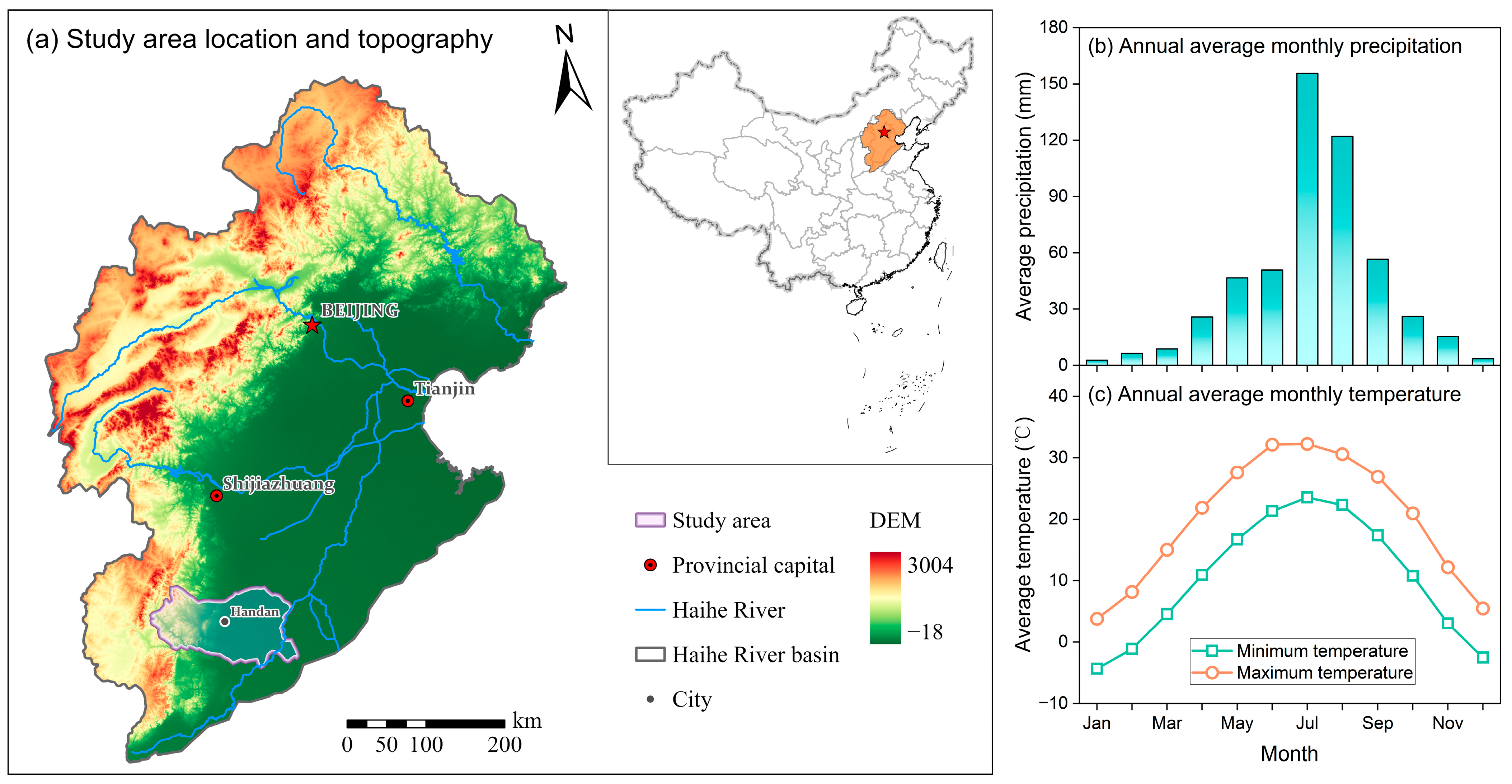
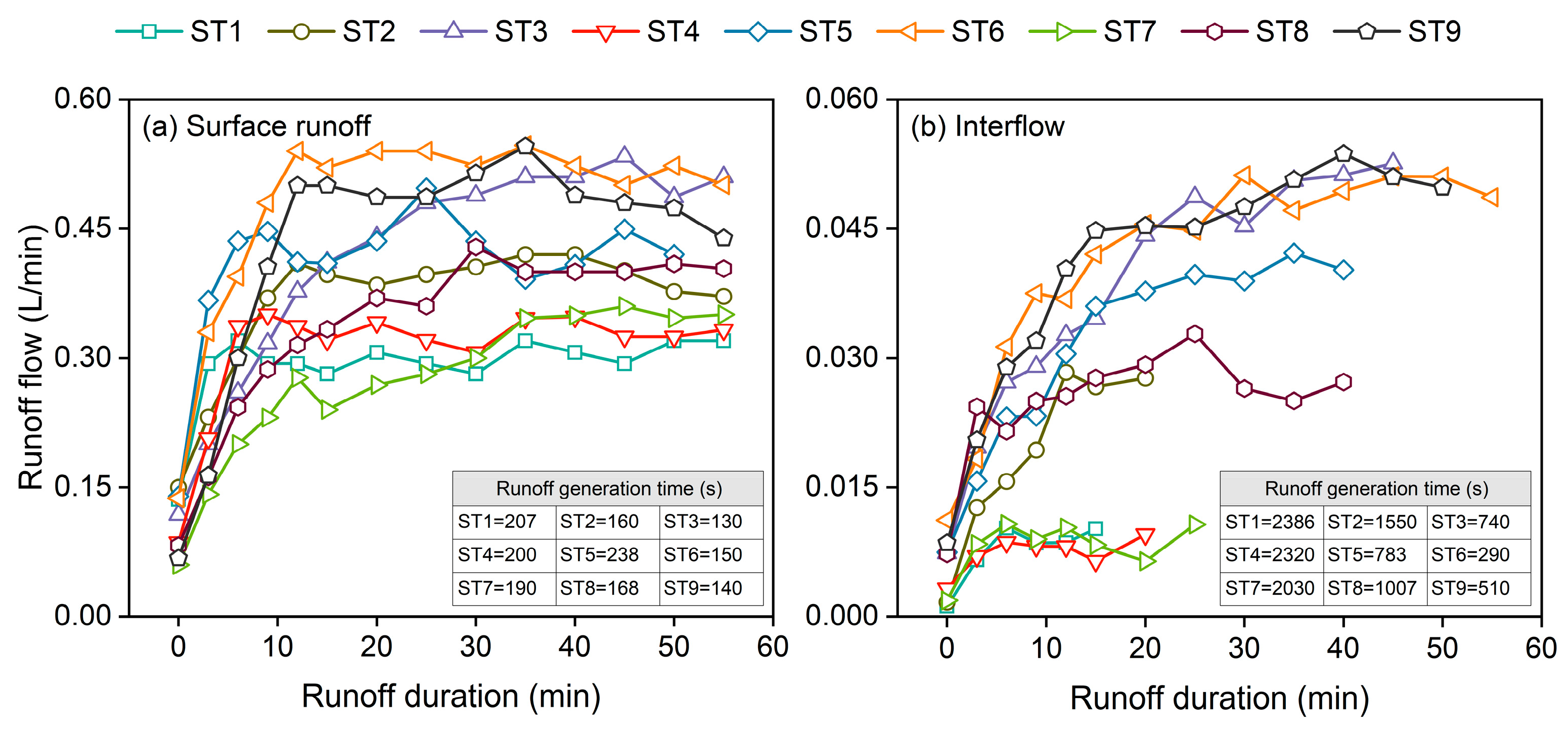
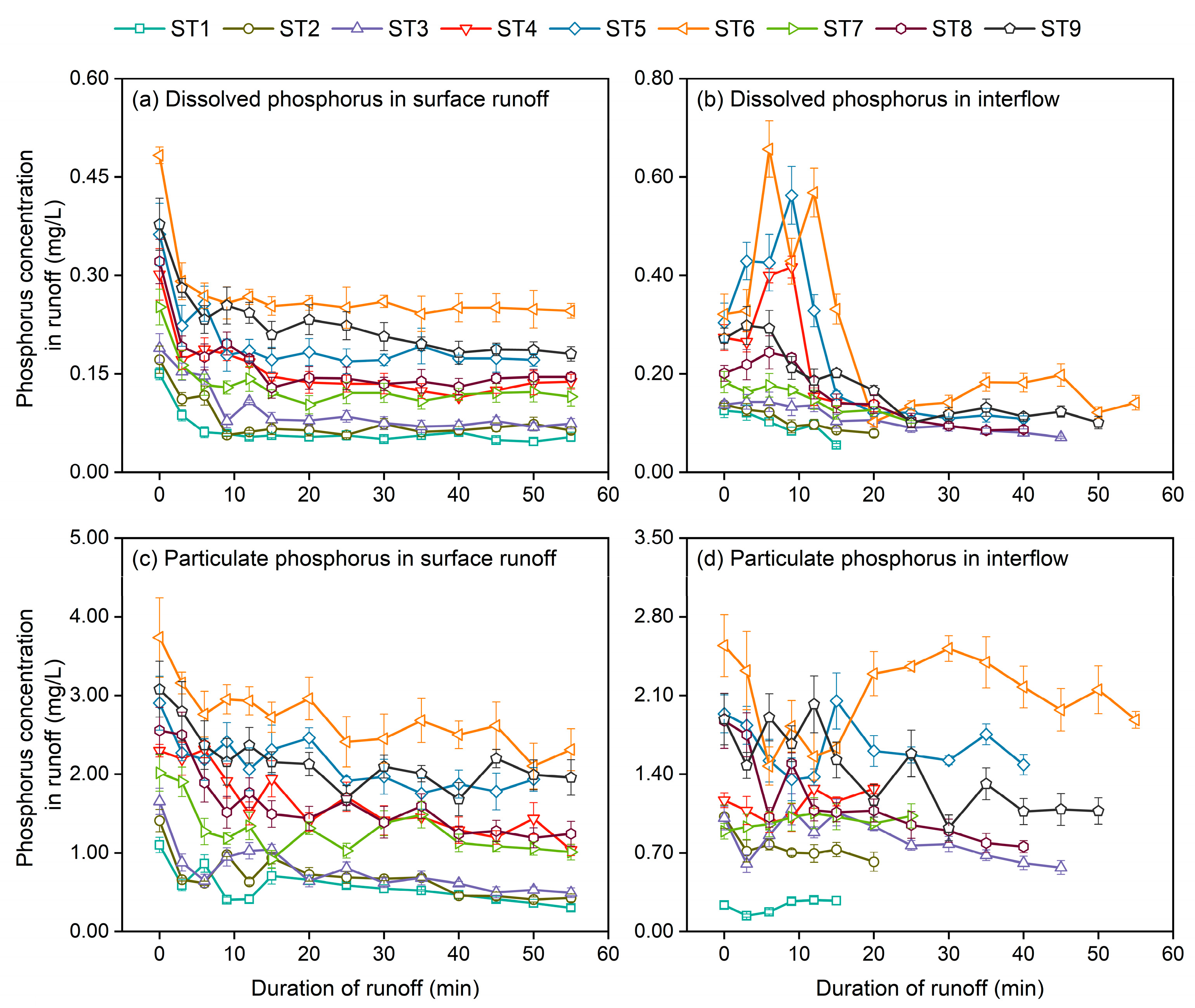
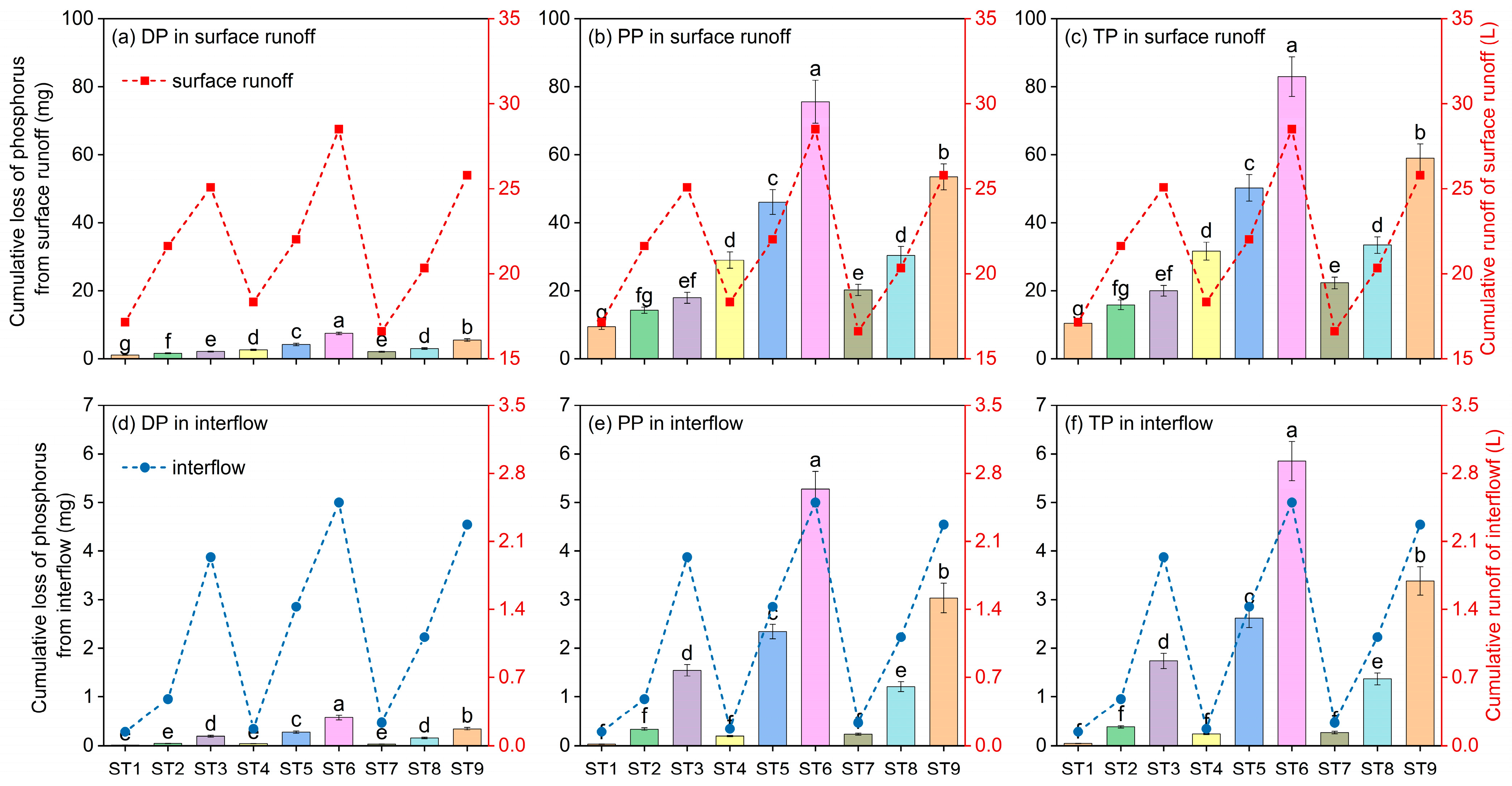
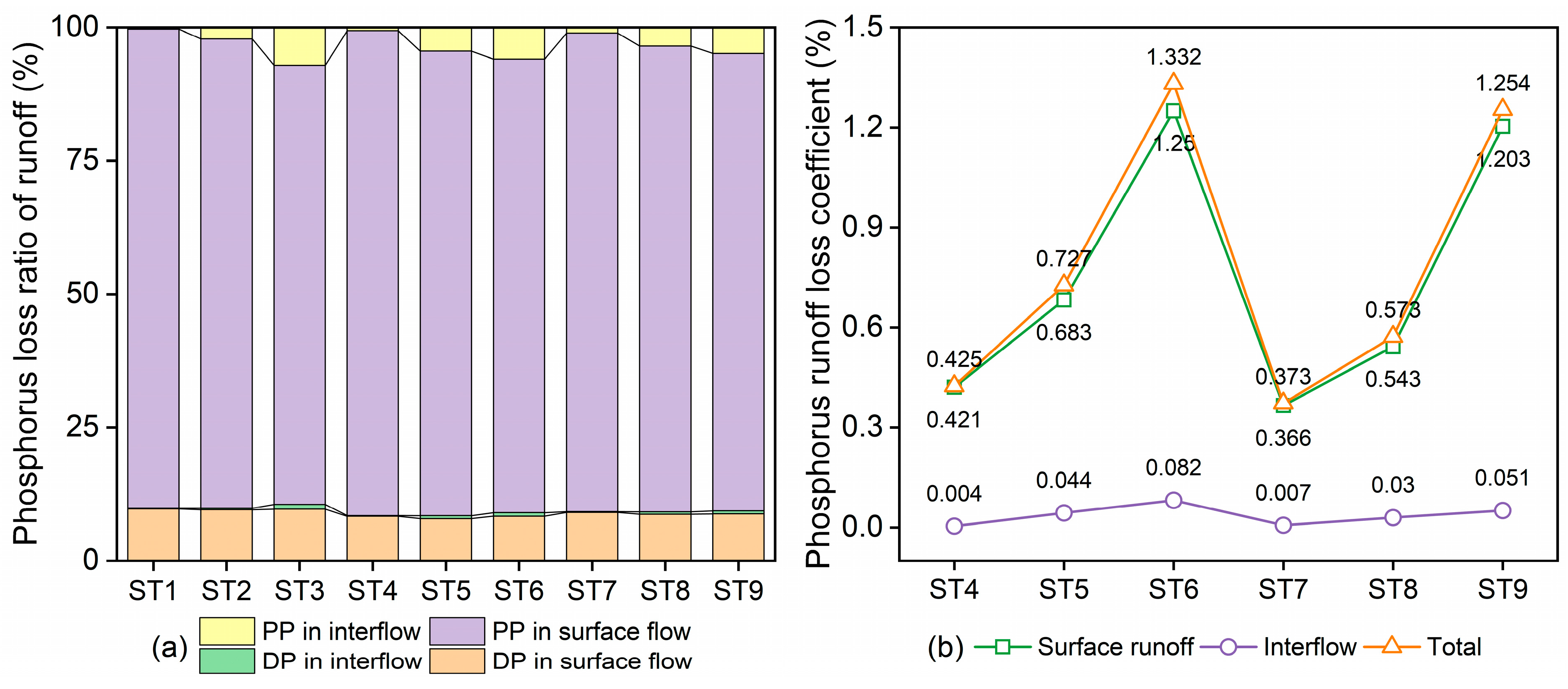
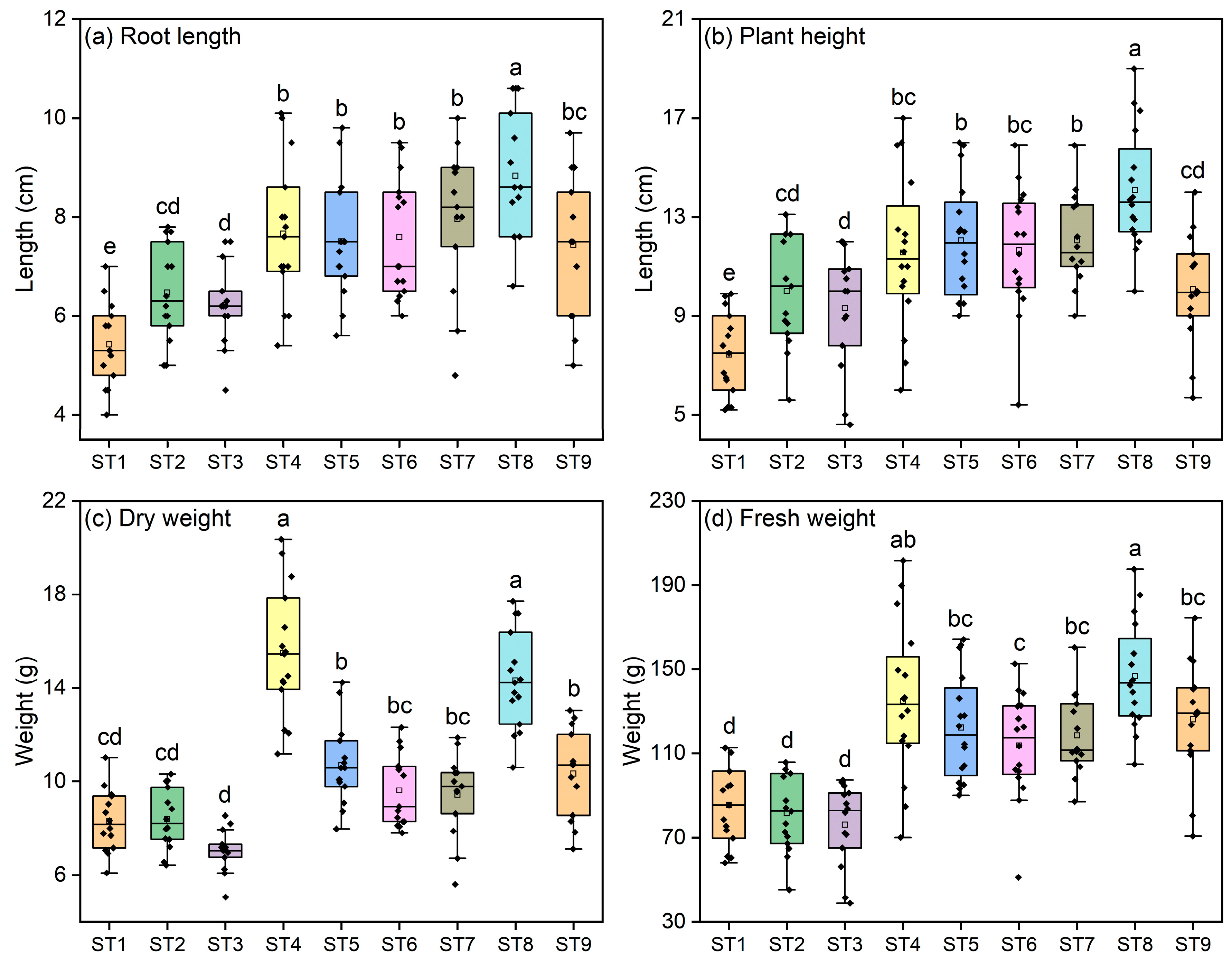
| Area | Year | ||||||
|---|---|---|---|---|---|---|---|
| 1990 | 1995 | 2000 | 2005 | 2010 | 2015 | 2020 | |
| Argentina | 1.9 | 6.5 | 11.7 | 14.8 | 17.5 | 11.3 | 25.8 |
| Australia | 34.1 | 57.1 | 47.0 | 39.0 | 31.7 | 29.6 | 30.9 |
| Brazil | 21.3 | 25.5 | 42.6 | 48.3 | 53.7 | 68.6 | 113.9 |
| Canada | 13.9 | 16.0 | 13.9 | 17.4 | 17.2 | 26.1 | 31.1 |
| China | 44.3 | 68.1 | 65.8 | 87.0 | 105.8 | 94.0 | 73.1 |
| India | 18.4 | 17.1 | 24.8 | 30.7 | 48.4 | 41.2 | 53.2 |
| Indonesia | 18.2 | 12.4 | 7.3 | 8.0 | 11.2 | 31.0 | 23.6 |
| Japan | 131.6 | 125.3 | 120.7 | 98.8 | 86.7 | 76.8 | 77.3 |
| Netherlands | 63.9 | 60.4 | 46.6 | 42.6 | 29.0 | 8.5 | 13.1 |
| Spain | 26.5 | 27.2 | 31.0 | 28.8 | 19.6 | 24.0 | 29.2 |
| Thailand | 15.5 | 22.2 | 20.2 | 16.7 | 21.5 | 20.8 | 16.6 |
| United States of America | 20.6 | 22.1 | 21.8 | 24.1 | 24.3 | 24.8 | 24.8 |
| Global | 24.3 | 20.4 | 21.5 | 25.0 | 28.5 | 28.4 | 30.9 |
| Soil Texture | BD | pH | OM | TN | AHN | TP | AP |
|---|---|---|---|---|---|---|---|
| Cinnamon soil | 1.25 | 8 | 13.4 | 0.88 | 67.5 | 0.82 | 13.1 |
| Soil Trough | Fertilization Schemes | N | P2O5 | Rainfall Intensity |
|---|---|---|---|---|
| ST1 | CK | 0 | 0 | 54 |
| ST2 | CK | 0 | 0 | 75 |
| ST3 | CK | 0 | 0 | 99 |
| ST4 | CF | 135 | 105 | 54 |
| ST5 | CF | 135 | 105 | 75 |
| ST6 | CF | 135 | 105 | 99 |
| ST7 | OF | 82.5 | 67.5 | 54 |
| ST8 | OF | 82.5 | 67.5 | 75 |
| ST9 | OF | 82.5 | 67.5 | 99 |
| Influencing Factors | Phosphorus Losses from Surface Runoff | Phosphorus Losses from Interflow | ||||
|---|---|---|---|---|---|---|
| DP | PP | TP | DP | PP | TP | |
| Rainfall intensity | 0.647 | 0.591 | 0.596 | 0.795 * | 0.780 * | 0.782 * |
| Fertilizer use | 0.674 * | 0.730 * | 0.725 * | 0.483 | 0.477 | 0.478 |
| Runoff volume | 0.775 * | 0.731 * | 0.735 * | 0.919 ** | 0.905 ** | 0.906 ** |
| Phosphorus Type | Regression Model Equation | R2 | F | Sig. |
|---|---|---|---|---|
| Group 1: Surface runoff | ||||
| DP | TPL1 = −3.725 + 0.455PCF + 0.069RA | 0.879 | 21.873 | 0.003 |
| PP | TPL2 = −36.634 + 5.124PCF + 0.657RA | 0.886 | 23.216 | 0.004 |
| TP | TPL3 = −40.358 + 5.579CF + 0.726RA | 0.885 | 23.122 | 0.004 |
| Group 2: Interflow | ||||
| DP | TPL4 = −0.504 + 0.029PCF + 0.008RA | 0.870 | 20.140 | 0.005 |
| PP | TPL5 = −4.766 + 0.270PCF + 0.070RA | 0.843 | 16.080 | 0.007 |
| TP | TPL6 = −5.270 + 0.299PCF + 0.078RA | 0.846 | 16.431 | 0.007 |
Disclaimer/Publisher’s Note: The statements, opinions and data contained in all publications are solely those of the individual author(s) and contributor(s) and not of MDPI and/or the editor(s). MDPI and/or the editor(s) disclaim responsibility for any injury to people or property resulting from any ideas, methods, instructions or products referred to in the content. |
© 2024 by the authors. Licensee MDPI, Basel, Switzerland. This article is an open access article distributed under the terms and conditions of the Creative Commons Attribution (CC BY) license (https://creativecommons.org/licenses/by/4.0/).
Share and Cite
Guan, R.; Wu, L.; Li, Y.; Ma, B.; Liu, Y.; Zhao, C.; Wang, Z.; Zhao, Y. Evaluating the Impacts of Fertilization and Rainfall on Multi-Form Phosphorus Losses from Agricultural Fields: A Case Study on the North China Plain. Agronomy 2024, 14, 1922. https://doi.org/10.3390/agronomy14091922
Guan R, Wu L, Li Y, Ma B, Liu Y, Zhao C, Wang Z, Zhao Y. Evaluating the Impacts of Fertilization and Rainfall on Multi-Form Phosphorus Losses from Agricultural Fields: A Case Study on the North China Plain. Agronomy. 2024; 14(9):1922. https://doi.org/10.3390/agronomy14091922
Chicago/Turabian StyleGuan, Ronghao, Leixiang Wu, Yi Li, Baoguo Ma, Yu Liu, Can Zhao, Zhuowei Wang, and Ying Zhao. 2024. "Evaluating the Impacts of Fertilization and Rainfall on Multi-Form Phosphorus Losses from Agricultural Fields: A Case Study on the North China Plain" Agronomy 14, no. 9: 1922. https://doi.org/10.3390/agronomy14091922






